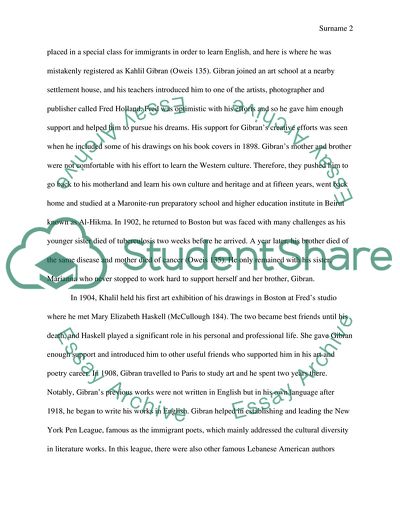Cite this document
(Biography of Kahlil Gibran Case Study Example | Topics and Well Written Essays - 1250 words, n.d.)
Biography of Kahlil Gibran Case Study Example | Topics and Well Written Essays - 1250 words. https://studentshare.org/biographies/1854010-kahlil-gibran
Biography of Kahlil Gibran Case Study Example | Topics and Well Written Essays - 1250 words. https://studentshare.org/biographies/1854010-kahlil-gibran
(Biography of Kahlil Gibran Case Study Example | Topics and Well Written Essays - 1250 Words)
Biography of Kahlil Gibran Case Study Example | Topics and Well Written Essays - 1250 Words. https://studentshare.org/biographies/1854010-kahlil-gibran.
Biography of Kahlil Gibran Case Study Example | Topics and Well Written Essays - 1250 Words. https://studentshare.org/biographies/1854010-kahlil-gibran.
“Biography of Kahlil Gibran Case Study Example | Topics and Well Written Essays - 1250 Words”. https://studentshare.org/biographies/1854010-kahlil-gibran.


